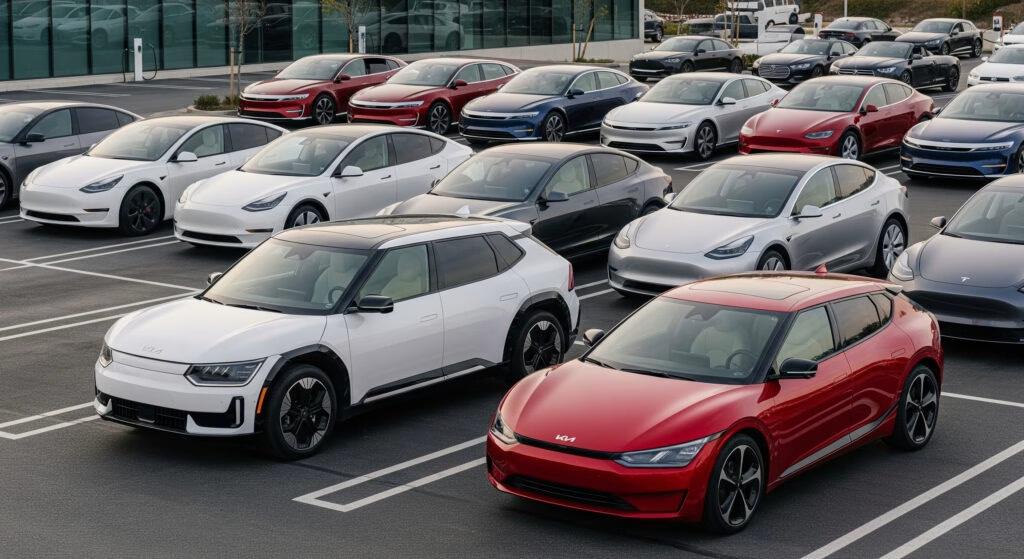Why Are Electric Vehicle Sales Surging Worldwide in 2025?
If you’ve been wondering whether electric vehicles (EVs) are still gaining traction, the answer is a resounding yes—at least on a global scale. According to the latest data from RHO Motion, a respected EV supply chain analytics firm, worldwide EV sales jumped a whopping 27% in 2025 compared to the previous year. That’s 10.7 million new EVs hitting the roads, with China and Europe leading the charge.
But the story isn’t as simple as “everyone’s buying EVs now.” Let’s break down what’s really driving these numbers, where the momentum is strongest, and why North America seems to be lagging behind.
Which Regions Are Leading the EV Boom—and Why?
China remains the undisputed heavyweight, accounting for 6.5 million of those global EV sales. That’s nearly two-thirds of the world’s total, and it’s not just a fluke. Aggressive government incentives, a robust domestic manufacturing base, and a population that’s increasingly comfortable with new tech all play a part. Even with a 13% dip in sales between June and July—possibly linked to a government subsidy audit—China’s year-over-year growth still clocks in at 29%.
Europe isn’t far behind in terms of momentum. The continent saw a 30% increase in EV sales, reaching 2.3 million units. Countries like Norway, Germany, and the Netherlands continue to set the pace, thanks to a mix of policy carrots (tax breaks, urban access perks) and sticks (combustion engine bans, congestion charges). The “Rest of World” category—think South Korea, Australia, and parts of Latin America—grew even faster, up 42% to 0.9 million units.
What’s Holding Back North America’s EV Growth?
Here’s where things get interesting. North America, and especially the US, saw just a 2% uptick in EV sales, totaling about 1 million vehicles. That’s a snail’s pace compared to the rest of the world. What’s the holdup?
Several factors are at play. Policy uncertainty is a big one. The US has seen shifting federal incentives, with the Inflation Reduction Act’s consumer tax credit set to expire soon. There’s also the matter of tariffs on imported EVs, which can raise sticker prices and dampen enthusiasm. Add in lingering consumer skepticism about charging infrastructure and battery range, and you’ve got a recipe for slow adoption.
Canada, too, has experienced a slowdown, despite earlier momentum. RHO Motion predicts a short-term boost in US demand as buyers rush to claim tax credits before the September deadline, but expects a dip afterward.
Are We Seeing Signs of a Global Slowdown?
While the overall trajectory for EV adoption remains strongly upward, there are hints that the breakneck pace might not last forever. China’s month-to-month sales drop is one example. Some analysts point to the winding down of government subsidies and the natural maturation of the market—early adopters have already bought in, and now it’s about convincing the mainstream.
Europe faces its own headwinds, with some countries re-evaluating incentive programs and grappling with grid capacity concerns. Still, the sheer volume of new models, falling battery costs, and tightening emissions regulations suggest that any slowdown will be relative, not absolute.
What Does This Mean for the Future of Gasoline Cars?
The writing’s on the wall: in most major markets, EVs and hybrids are rapidly becoming the default choice for new car buyers. Gasoline vehicles aren’t disappearing overnight, but their dominance is fading. Automakers are hedging their bets—some, like Kia, are still leaning on gas models to offset weaker EV sales in certain regions, but the long-term trend is clear.
For the US auto industry, the big question is whether it can catch up or if it risks ceding leadership to foreign competitors. With global automakers investing billions in EV development and production, the stakes couldn’t be higher.
How Can Consumers and Policymakers Respond?
For buyers, the landscape is shifting fast. If you’re considering an EV, keep an eye on local incentives and charging infrastructure developments—they can change the math overnight. Policymakers, meanwhile, have a delicate balancing act: support adoption without overextending budgets or creating market distortions.
Industry experts suggest that the next phase of growth will depend less on subsidies and more on real-world usability—think faster charging, longer range, and lower costs. Automakers that can deliver on these fronts are likely to win big.
The big takeaway? The global EV surge isn’t about perfection—it’s about smarter adjustments. Start with one change this week, and you’ll likely spot the difference by month’s end.

